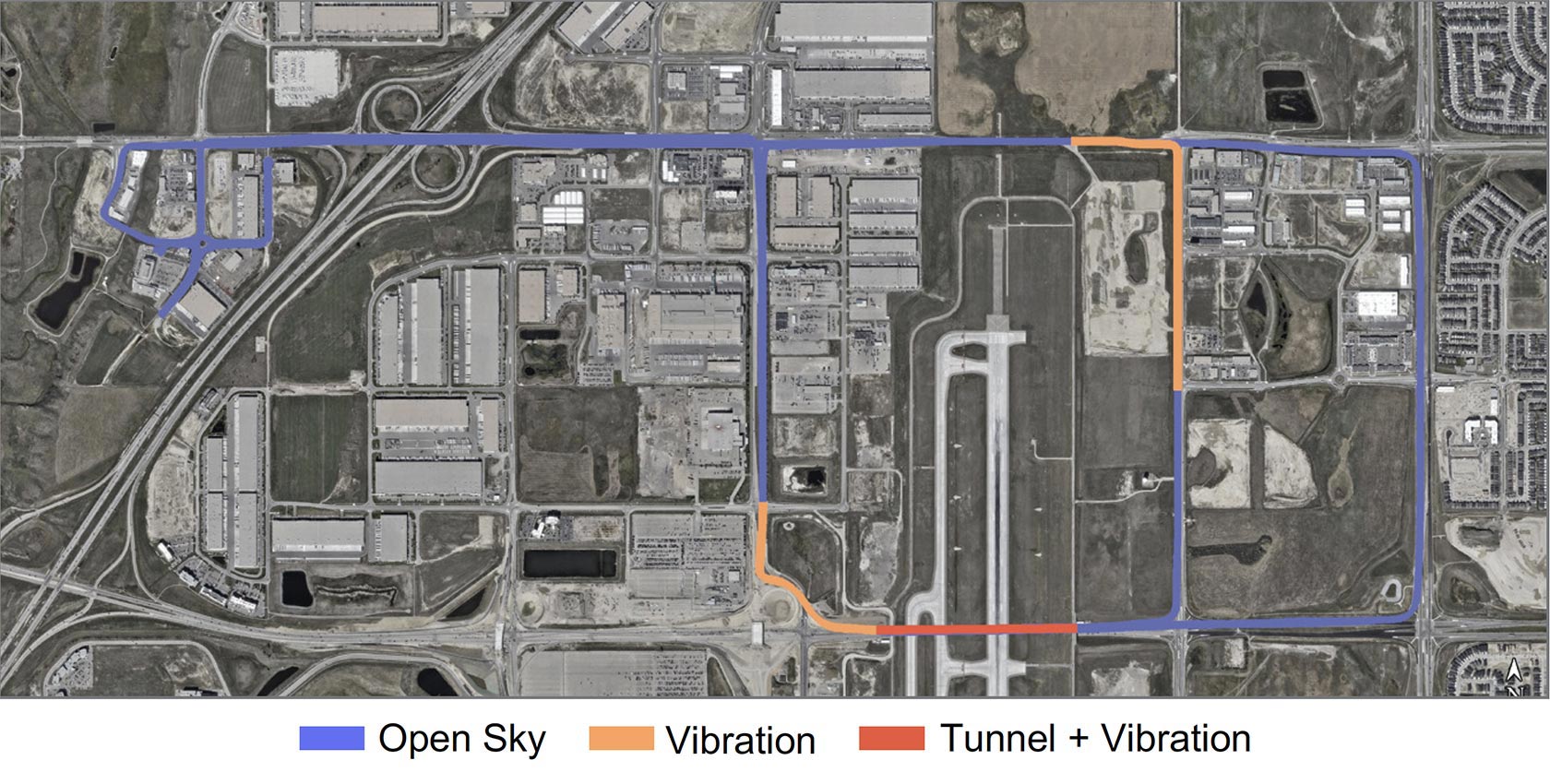AGRICULTURE

Inertial navigation systems (INS) are increasingly deployed into autonomous use cases, which often operate under harsher environmental conditions.
Without the need to account for the comfort of human operators, factors such as temperature, pressure, humidity and vibration, are not as critical to minimise in an autonomous vehicle design. This introduces interesting challenges when navigating through extreme, physically stressing environments.
One particularly stressful environmental factor to INS systems, such as SPAN GNSS+INS technology, is vibration, which, if not taken into consideration and mitigated, can cause challenges in delivering a reliable, robust and accurate navigation solution.
Vibration can be thought of as small displacement oscillatory motion at a given physical point in space. In the context of a moving vehicle platform, it is often present as a side effect of the mechanical operation of the vehicle from energy sources such as engines, fans or other mechanical equipment on board.
The primary input sensor in any INS used to navigate autonomous vehicle platforms is the inertial measurement unit (IMU). It measures physical acceleration and angular rates to allow the INS to calculate relative changes in the position, velocity and attitude of the IMU over a specified time interval. Rigidly attaching the IMU to a vehicle of interest and knowing the starting position, velocity and orientation allows for the INS to provide a full navigation solution for real-time applications.
Vibration to an IMU is analogous to radio frequency (RF) interference to a GNSS receiver. It makes it difficult for the sensor to extract precise measurements from the environment and can lead to a degraded navigation solution output. In extreme cases, high vibration can overwhelm the sensor measurements causing a total loss in the ability to compute a navigation solution.
The INS solution is obtained by integrating IMU observations over a specified time interval after all associated errors are removed. Vibration typically introduces unmodelled errors that result in reduced overall system performance.
Like RF interference, eliminating vibration at the source is the most effective solution. Although it is not feasible to eliminate all sources of physical vibration, there are strategies to increase robustness against its presence.
While the vibration applied to the IMU is extreme in this test case, it clearly shows that the vibration profiles present on a platform need to be properly characterised to gauge whether the available dynamic range will be exceeded.
This article provides a comprehensive understanding of the various impacts of vibration on both INS inputs and outputs. Results from real-world demonstrations of these effects using a vehicle test set-up are presented along with a discussion of vibration mitigation strategies.
Vehicle trajectory used for vibration testing.

Read the full article by downloading Velocity 2023
Download the latest edition of Velocity magazine.
Contact sales for product and service inquiries.
Contact support to speak with an expert technician available 24/7.